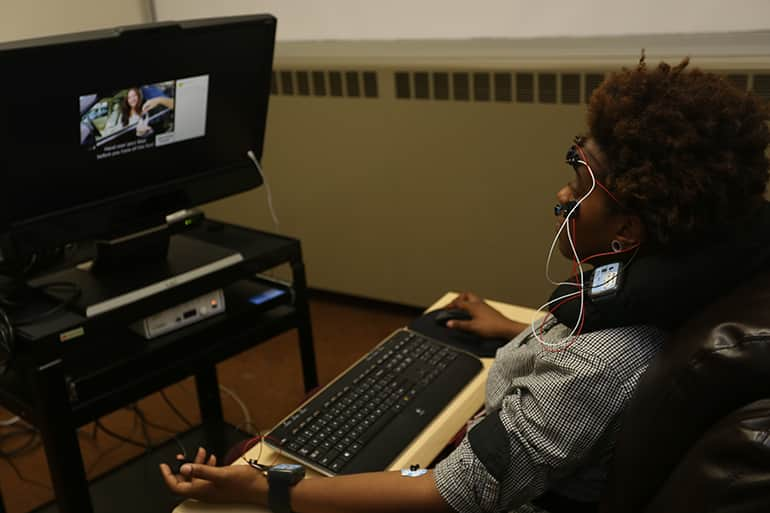Few would argue that media and advertising affect human perception.
But what one particular ComArtSci lab is exploring is the immediate effect that media and advertising has on a person's cognitive, emotional and physiological responses, as well as subsequent behaviors.
Founded in 2014, the Media and Advertising Psychology (MAP) Lab is set up to observe and analyze the effect of mediated communication delivered through social media, television, advertising, print or multi-screen venues. Studies through the MAP Lab measure and collect data using the latest technology in psychophysiological and eye-tracking research.
"We're among the few labs in the country that combine the study of human psychology and physiology as it relates to media use," said Saleem Alhabash, MAP Lab Co-Director and assistant professor of Public Relations and Social Media. "What also makes us different is our intense focus on advertising, marketing and social media."
Housed in the Communication Arts and Sciences Building, the MAP Lab consists of a room for researchers and a room for research participants. The experimental room interfaces with devices that track measures like heart rate, pulse, respiration, electrodermal (skin) activity, and facial electromyography (muscle activation) and eye movements. The participant area comes complete with a recliner, TV, books and a large viewing screen – similar to a modern living room.
Researchers collect psychophysiological data using the BIOPAC MP150, while eye-tracking measures like gaze and gaze path, fixation, and duration are collected using the Tobii TX300 (a stationary device equipped with a 22-inch screen) and the Tobii Glasses 2 (a wearable eye tracker).
"By taking measurements as things are viewed, we can see a person's processes related to that particular message," Alhabash said. "For instance, did they pay attention? Did the message activate pleasant emotions? The notion is to see how these processes are linked to consumption behaviors later on."
Currently, MAP Lab Co-Directors Patricia Huddleston, Anastasia Kononova and Ashley Sanders-Jackson and more than two dozen graduate and undergraduate students are conducting multidisciplinary research through the MAP Lab in areas that include health communication, advertising, marketing, social media, retailing and media multitasking. The MAP Lab is funded by the Department of Advertising + Public Relations.
